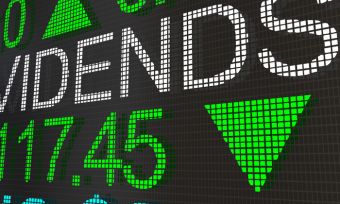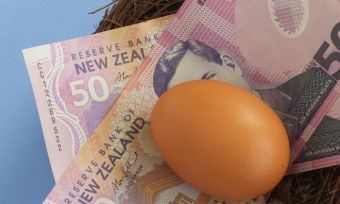What is a bear market?
As markets across the world fall (or look likely to fall) into the claws of a bear market, you may be wondering what exactly that means.
Technically speaking, a bear market is when a market falls by at least 20% from a 52-week high, as it has done both in the US (S&P500) and here in New Zealand (NZX50).
But talk of a bearish market tends to occur long before the 20% mark is crossed. And many think of it as any sustained period of decline.
Why is it called a bear market?
Bears are known for going into a long period of hibernation, and make for a good analogy for a retreating market. Apparently, bears also swipe their claws down when they attack.
What’s the opposite of a bear market?
Keeping within the animal kingdom, when a market is strong and prices are rising, it’s known as a bull market. Because it’s charging ahead like a bull.
Compare Online Share Trading Platforms
Should I be worried about my stocks?
Bear markets can be pretty scary. Especially so for new investors, like those who picked up share trading during the pandemic. Apart from the short pre-pandemic slump in early 2020, the last protracted bear market occurred over a decade ago, on the back of the Global Financial Crisis.
However, it’s worth remembering that, historically, markets have always risen and fallen. And, indeed, the whole idea of investing is buying low and hoping prices increase.
Most long-term investments, such as KiwiSaver, are based on long-term returns and, therefore, are less impacted by short-term rises and falls in the market.
However, short-term and high-risk speculative investments are more susceptible to falling markets. Such risks are highlighted by the crypto market. Currently, anybody who bought Bitcoin over the past two and a half years has lost money. Those who bought at market peak, spectacularly so.
This is one of the reasons a diversified portfolio is advised, so that risk is spread across multiple assets and investments.
But, ultimately, if you’ve already sustained big losses, you only have two choices: sell and crystalise your losses, or to hold in the hope that markets rise.
→Related article: How to Pick Your KiwiSaver Fund
Should I invest in a bear market?
While a sea of red can be scary, investing in a bear market can provide some good opportunities for future growth. However, as with any investments, be sure to understand the risks involved, do your research and choose wisely. And, if ever in doubt, seek the help of a licensed financial adviser.
How to invest in a bear market?
In a bear market, especially, it’s prudent to concentrate on long-term, not short-term returns.
Buy the dip
In a bear market, many investors see the opportunity to ‘buy the dip’. When a stock goes down, it becomes cheaper. While some investors choose not to buy a stock that’s falling in value, others may see its true future value and opt to buy in the dip, with the goal of holding on to it until it starts to perform well again.
Take a conservative approach
On the other hand, you may feel it’s prudent to be more conservative. While it may not be a good idea to sell off high-risk assets and lock in losses (unless necessary), you may feel that taking a more conservative approach is better suited to your risk appetite.
If so, traditionally, investments such as bonds and term deposits are regarded as safer assets. Although bear in mind that the current high rate of inflation means these investments may simply limit losses, and not have the same profit potential as other investments.
For more advice on what to do in the current bear market, you can read this Canstar guide: What To Do When the Stock Market Goes Down.
Dollar cost averaging
While bear markets present an opportunity to ‘buy the dip’, trying to find the bottom of this dip is generally considered impossible. The market is difficult to predict and finding the perfect moment is more akin to gambling than strategy.
So instead of trying to time the market, if you feel the asset is currently in a dip, it may be a good time to begin dollar cost averaging into the asset.
Dollar cost averaging (DCA) is an alternative to investing a lump sum. Instead of investing all of your capital in one go, the idea is that you invest smaller, fixed amounts on a regular basis over an extended period of time.
For example, instead of investing $6000 in one transaction, you could invest $1000 per month over six months. The price of the asset you’re buying may go up and down over that period, but you always invest the same amount. This means that you end up buying more of the asset when the price falls in any given month, and fewer units if the price rises.
You can see an example of how dollar-cost averaging can be effective in a bear market below:
| Month | Investment | Share price ($) | Units purchased |
|---|---|---|---|
| 1 | $1000 | 8 | 125 |
| 2 | $1000 | 5 | 200 |
| 3 | $1000 | 4 | 250 |
| 4 | $1000 | 2 | 500 |
| 5 | $1000 | 3.33 | 300 |
| 6 | $1000 | 6.66 | 150 |
| $6000 invested | Average share price: $3.9344 | Total units bought: 1525 |
Had you invested $6000 at a share price of $8, you would have ended up with just 750 units. And had you waited until it hit $5 or even $4 before putting in your money (believing it to be the bottom) you would still have ended up with less than you did through DCA.

About the author of this page
This report was written by Canstar Content Producer, Andrew Broadley. Andrew is an experienced writer with a wide range of industry experience. Starting out, he cut his teeth working as a writer for print and online magazines, and he has worked in both journalism and editorial roles. His content has covered lifestyle and culture, marketing and, more recently, finance for Canstar.
Enjoy reading this article?
You can like us on Facebook and get social, or sign up to receive more news like this straight to your inbox.
By subscribing you agree to the Canstar Privacy Policy




Share this article